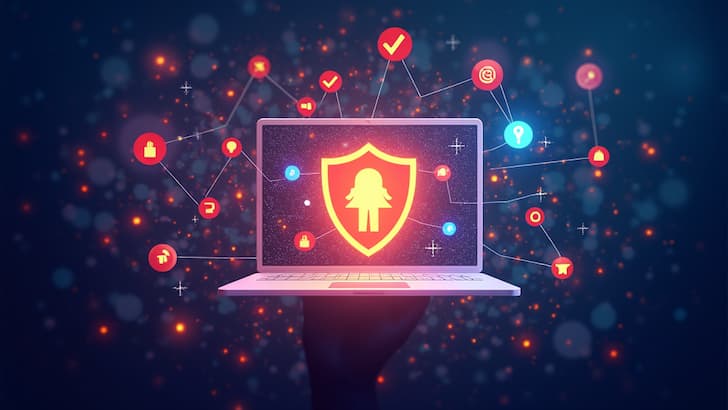Hate speech online can make social media, forums, and comment sections difficult places to spend time. I’ve seen these messages fill up my feed, and I understand how powerless or frustrated it can feel when it seems like bad behavior is everywhere.
Sometimes it’s tempting to stay quiet or just scroll past, but doing nothing can help hate speech gain even more ground. I’ve found that you don’t need a huge following or any special title to make a positive difference online. Small, consistent actions from regular people can shape online spaces into more welcoming and respectful communities for everyone. Even if it seems like your efforts are small, they add up and help create a supportive internet culture in the long run. When more people step up, the effect multiplies and sends a message that hate isn't welcome.
I’ve put together 13 ways anyone can actively push back against hate speech and still be a hero online. These are realistic ideas that don’t require getting into arguments or putting yourself at risk, and they’re all things I’ve used personally or seen others use with good results. You might pick one to start or work several into your online routine. Let’s get into the helpful steps that can really set a positive tone on the internet.

1. Understand What Counts as Hate Speech
Before speaking up or reporting anything, it really matters to know what hate speech actually means. Hate speech includes language, images, or actions online that attack, demean, or promote violence against people because of race, religion, gender, sexuality, disability, ethnicity, or similar qualities. Some comments may just be rude or annoying, but hate speech directly targets and harms whole groups of people.
I make it a habit to check the community guidelines of each platform, since the definition and handling of hate speech can vary. Facebook, X (formerly Twitter), and Reddit all have dedicated pages explaining what users can and cannot post. Taking even a few minutes to read these helps me confidently spot when something crosses the line and needs reporting or a response. Regularly reading updates from these platforms can also clue you in to new policies or features for safety.
When in doubt, I ask myself: Does this target someone for who they are, not just their opinions or what they say? If the answer is yes, it usually counts as hate speech and deserves action, whether that’s a report, a comment, or offering support to the person affected.
2. Use the Report Feature Responsibly
Most platforms provide tools to report comments, images, or accounts that spread hate. Using these tools is one of the easiest ways I can help. Reporting content doesn’t get someone in trouble instantly, but it sends the post for review by moderators. Some platforms require more detail, and it’s helpful for the process if you use the platform’s own categories and language.
I’ve learned to provide clear reasons when reporting and use the closest match (like “hate speech or symbols”) for the situation. If there’s a comment box, explaining briefly how the post breaks the rules helps moderators move faster and increases the chance the content will be taken down. As these systems get better with AI, your feedback helps shape what kind of content gets flagged in the future.
If a pattern emerges (such as a group or user posting hateful content repeatedly), save evidence like screenshots before reporting, in case the platform’s moderators need follow-up. Your reports help train the systems and remind the platforms that safety matters.
3. Avoid Amplifying Harmful Posts
It can be tempting to share or quote hateful content to shame the person or warn others, but this often just gives the original post more attention. I’ve seen hateful posts go viral because well-meaning people kept sharing them as examples of “bad behavior.” Whenever possible, I avoid retweeting, quoting, or replying directly to hate speech, especially if it’s from someone looking for attention or causing drama on purpose.
Instead, I focus on reporting the content and supporting victims—either publicly or privately. This limits the reach of the hateful message and keeps it from catching on with a bigger audience. If you need to warn friends about a threat, summarize the issue in your own words rather than spreading screenshots of the original hate.
4. Support Victims Publicly and Privately

Support Victims Publicly and Privately
When I spot someone being targeted, a simple supportive message can mean the world. Posting a reply like “Sorry you’re dealing with this” or “You don’t deserve this treatment” shows the person they’re not alone. Public support helps build a community vibe that drowns out some of the negativity.
If showing public support feels uncomfortable, a direct message makes a difference. I’ve reached out to people targeted by hate and offered a kind word, a listening ear, or just acknowledged their experience. Even if my message gets no reply, I’ve heard that knowing someone cared helped them deal with the emotional impact. Supportive group members can even send positive content to tip the scales back toward kindness.
5. Share Positive Counter Speech
Counter speech means posting positive or fact-based messages in response to hate. You might offer real stories, humor, or resources that support kindness, diversity, or the group under attack. Sometimes, when trolls post hateful comments on news stories, I respond with supportive words for the targeted group or share links with accurate facts that challenge the narrative.
Counter speech doesn't need to be long or start arguments—short, direct posts like “We support our neighbors from all backgrounds” can change the tone of a conversation. Research shows that positive counter speech makes a space less hostile and helps the targets feel safer. When a group teams up to post positive responses, the effect grows. You can also create posts about kindness, equality, or respect that set the mood before hate even starts.
6. Don’t Get into Arguments with Trolls
Trolls post hateful things to provoke emotional reactions, not to have real conversations. In my experience, direct debates just encourage trolls to keep going or escalate their attacks. Instead of getting sucked into arguments, I answer once with a brief supportive comment (if at all) and then move on. Remaining calm and not taking the bait frustrates their goal of stirring up trouble.
If someone is obviously trying to provoke or is being abusive, I ignore or block them after making a report. Protecting your time, energy, and mental health is important, and engaging with trolls almost never changes their mind. It also decreases their influence by starving them of the attention they’re after.
7. Use Block and Mute Tools to Stay Safe
Sometimes, doing the right thing can make you a target for more hate. I’ve had strangers come after me for calling out bad behavior or supporting others. Block and mute features are key tools for protection. Muting means you don’t see someone’s posts in your feed (and they don’t know it), while blocking ends all contact.
I use these features whenever harassment or trolling starts, without feeling guilty. These tools exist so everyone feels safe joining online conversations. Some platforms let you censor certain keywords or block messages before they reach you, which can really help keep your space comfortable. If you feel overwhelmed, stepping away for a while or getting support from friends counts as using these tools, too.

8. Educate Yourself and Others on Hate Speech
Knowing the origins and patterns of hate speech helps in responding and recognizing subtler forms. The Anti-Defamation League, colleges, and advocacy groups offer educational resources and guides outlining how hate operates online. I read up on new trends or symbols used in hate speech so I can spot subtle versions when they appear.
Sharing articles, infographics, or short videos with your friends, family, or followers can gently raise awareness. You don’t need to make long lectures; just a few facts or a well-chosen link can plant the seed of change. When people understand the harm hate brings, they’re less likely to take part themselves and more likely to support positive community norms.
9. Join/Build Positive Communities
Some parts of the internet are known for being supportive and safe—usually because group members and moderators work hard to keep them that way. I’ve joined online forums, Discord servers, and Facebook groups that clearly ban hate and have active moderation teams. These spaces stand out because everyone is clear on expectations right from the start.
If there isn’t already a positive online space for your interests or identity, you can start one with just a few friends. Use available moderation settings and content filters to keep things welcoming. These communities show what’s possible online and offer real-life proof that respect can rule instead of hate.
Full HD Webcam with Built-in Microphone and Rotatable Tripod
Full HD Video and Wide Angle Lens - The Tewiky High Definition 1080p Webcam features a wide angle lens and delivers crisp clear images and fluid video at 30 frames per second while gaming, video calling, online teaching, live streaming, or recording.
We earn a commission if you click this link and make a purchase at no additional cost to you.
10. Encourage Platforms to Step Up
Social platforms notice when many people speak up about ongoing hate that goes unchecked. If you report hate speech but see little action, save examples and reach out to the platform’s support center, feedback form, or public help forums. You can also link up with others experiencing the same issues for more impact.
Some people organize petitions or group letters asking for stronger moderation or more detailed anti-hate rules. Community pressure has pushed platforms to add more block settings or take faster action against repeated offenses. Even if you don’t want to start a campaign, just adding your feedback helps raise the bar for what’s expected in these spaces.
11. Protect Your Personal Information Online
Taking a stand or supporting targets of hate speech can put a spotlight on you. Protecting your info is key to staying safe. I frequently review privacy settings on social media to limit what strangers see and avoid sharing things like my home address, employer, or travel plans publicly. For even more safety, I use different email addresses for each platform and make sure not to reuse passwords.
Groups like the Electronic Frontier Foundation offer privacy checklists to help anyone level up their online security. It’s worth spending a little time every now and then to keep your data safe—it helps you keep being active and supportive without fear.
12. Promote Self-Care and Know Your Limits
Promoting on our limits - including your own is as important as helping others. Burnout, stress, and anxiety happen when you try to solve every problem or constantly see negativity. Keep talking about maintaining healthy boundaries, take regular breaks, and remember it’s more than okay to log off and recharge. Our mental health comes first so we can all keep making positive contributions in the long run.
Sharing responsibility with friends, moderators, or support networks makes everyone feel less isolated and helps your group or community stay supportive without wearing anyone out. Remember: even small good actions matter, and taking care of yourself helps you keep doing them.
13. Help Others Build Digital Literacy
A lot of hate speech and dangerous ideas spread because people don’t know how to fact-check sources or spot manipulated content and hidden messages. If you have strong skills in checking for fake news, digging into sources, or sorting fact from fiction, share these tricks with your networks. Show others how to check stories, use fact-checking sites, and question where memes really come from. Sometimes I run short “myth-busting” chats with friends or post quick guides so people know what’s reliable and what isn’t.
Better digital literacy helps everyone, not just in spotting hate, but in making the whole online experience smarter and safer for all of us. Each person who learns these skills can teach someone else, as that knowledge spreads and builds a more resilient internet.
Making a Positive Difference Online
I know from experience that standing up against hate doesn’t require superhero skills or taking on huge risks. It takes knowing the rules, using available safety tools, and sticking with small, regular actions. What really counts is consistency, practicing self-care, and backing up others when possible. Each time you report hateful content, post something positive, or support someone getting picked on, you’re making the internet friendlier and brighter for everyone.
Even when the web seems overwhelmed with negativity, remember you’re never alone—there are countless people across the internet working quietly to build communities where respect wins out. By taking regular, doable steps and encouraging others around you, we can gradually turn online spaces into places where hate doesn’t stand a chance. Step by step, message by message, your actions create ripples that make social media safer and, ultimately, more enjoyable for all.
How I "Finally" Make Over $7,000 Monthly Income
"The most valuable thing I've ever done!"

